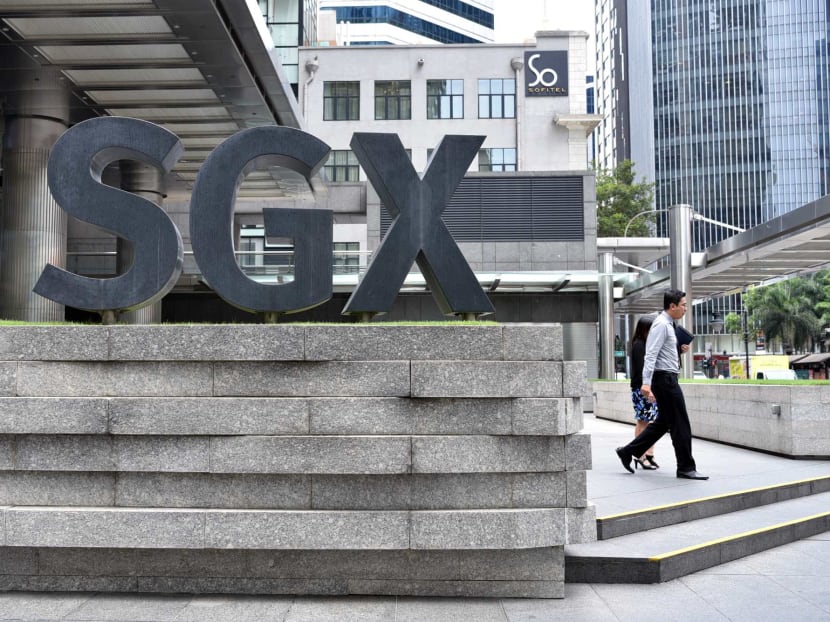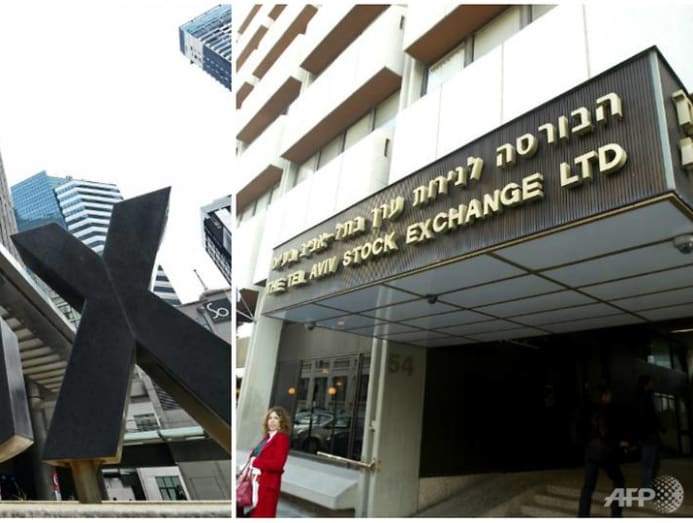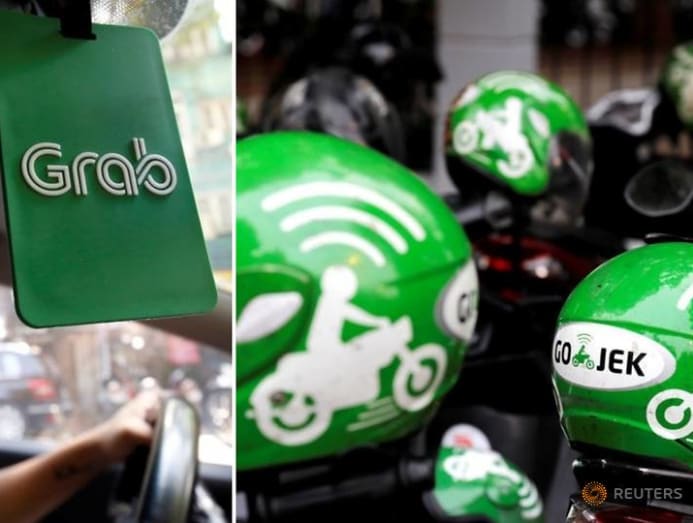commentary Commentary
Commentary: Why aren't tech unicorns listing on the SGX?
Early industry hopes that Singapore might be able to win over some primary start-up IPOs from Nasdaq have given way to reality that US capital markets are still the most attractive, says Kenneth Lim.

File photo of the SGX building (Photo: Jeremy Long)
SINGAPORE: The Singapore Exchange (SGX) has been a keen champion of dual listings over the years even though secondary listings on the stock exchange have been a mixed bag.
But the COVID-19 pandemic and political trends are reversing decades of globalisation and increasing friction in the cross-border flow of capital, and the dual listing could be making a comeback.
For SGX, the next few years will present a crucial test of whether it can fix the ails of dual listings and create a sustainable pillar of growth for the Singapore stock market.
READ: Commentary: SGX sees boom in retail investments. But can it last?
Early industry hopes that Singapore might be able to win over some primary start-up initial public offerings (IPOs) from Nasdaq have given way to a more realistic acknowledgement that US capital markets are, by far, still the most attractive listing destination for tech start-ups by virtue of their depth, sophistication and liquidity.
On the liquidity front, it is also tough for Singapore to beat rival Hong Kong.
SGX’s SECONDARY LISTING STRATEGY
The dual listing has therefore emerged as a key strategy for SGX to try and capture some of the tech listings. Go ahead and do your primary listing in New York, SGX pitches to start-ups, but do a secondary listing as well in Singapore so you have a capital raising option in Asia.
In 2014, SGX changed its secondary listing regulatory framework so that issuers from a shortlist of approved exchanges could simply abide by the rules of their home exchange without facing additional requirements from SGX.

In 2017, SGX entered into a tie-up with Nasdaq to develop ways for concurrent or sequential listings on both markets. Both parties followed up in July this year with a streamlined listing path that allows a dual listing on SGX to rely on Nasdaq regulatory documentation.
In 2018, SGX and The Tel-Aviv Stock Exchange (TASE) inked a partnership to encourage capital raising across both markets, including listing on both exchanges. Earlier this month, SGX and TASE announced that they would exchange regulatory information on dual-listed stocks to enhance investor protection.
READ: Commentary: Here’s why stock markets are defying the economic reality of COVID-19
READ: Commentary: Grab’s new platform fee may have raised eyebrows but it is nothing out of the ordinary
Despite all the work and innovation, SGX has yet to secure a dual listing with Nasdaq or TASE, although industry sources indicate that there are potential issuers moving through the pipeline.
A MIXED BAG SO FAR
The fact is that dual listings have always been a bit of a mixed bag for SGX. It might be tempting to look at the 30 secondary listings currently on SGX and conclude that the secondary listings have brought mostly winners to the market.
After all, that list of 30 includes prominent index stocks such as Dairy Farm International Holdings, Hongkong Land Holdings, Jardine Matheson Holdings and Jardine Strategic Holdings.
But there is a survivorship bias at play, with only companies for which the secondary listing is working out likely to maintain the secondary listing.
Indeed, a number of companies in recent years have also pulled the plug on their secondary listings on SGX. The most recent is Alibaba Pictures Group, which has taken steps to delist its shares from SGX by December this year to retain only its primary Hong Kong listing.
READ: Commentary: Financial markets beware. The white swans of 2020 are coming home to roost
Before Alibaba Pictures, companies that had given up on their secondary listing in Singapore include Ausnet Services, Weiye Holdings and Hengxin Technology.

One common thread among those companies was the lack of trading in their respective stocks in Singapore. In other words, from the perspective of those issuers, the cost of the secondary listing in Singapore outweighed any benefits to liquidity.
SGX will have to tilt the analysis if it wants to get more dual-listed tech companies, or any company for that matter.
GAINING FROM CAPITAL CONTROLS
The good news is that the balance has been shifting in SGX’s favour.
One of the biggest arguments against dual listings over the past couple of decades was the increasing ease of moving capital across borders. With the rise of online trading, it is fairly trivial these days for an investor in Asia to trade a stock in New York.
READ: Commentary: Challenges facing the Singapore Exchange not named COVID-19
READ: Commentary: It's payback time for the way China handled the Internet all these years
The use case for a secondary listing was therefore diminished.
But wariness has returned about moving capital across borders. In politics, that friction comes from anti-capitalist sentiment and a broad trend toward tightened borders.
American regulators are making it harder for Chinese companies to list on US exchanges. From a mobility perspective, the pandemic has sharply limited the ways in which issuers and brokers can market and target capital overseas.
SGX can benefit as a hedge in these times for issuers. A Chinese company that is listed on Nasdaq, for example, might want to have a secondary listing in Singapore, which enjoys a reputation as a neutral and business-friendly location, in case the US channel becomes too difficult to access.
On Jul 16, when Bursa Malaysia experienced technical issues that shut down trading, investors in Singapore were able to continue trading shares of Malaysian rubber glove manufacturer Top Glove.
RIDING ON THE TECH WAVE
Another development helping SGX is the cyclical development of the region’s start-up sector.
The current wave of tech start-ups began about a decade ago. This means that if they can get past the pandemic, the likes of Grab, Gojek and Tokopedia are at the size and stage where IPOs are attainable and early investors are keen to exit.

These Southeast Asian brands will be familiar to domestic investors, and that familiarity could generate enough liquidity to make a dual listing in Singapore worthwhile.
In fact, Singapore’s original tech start-up poster child, Creative Technologies, used to maintain listing status in Singapore and New York, and eventually chose to retain just its Singapore spot.
But capitalising on the potential is a different matter.
ALL ABOUT LIQUIDITY
Perhaps the biggest obstacle that SGX faces is the persistent perception of poor liquidity in Singapore.
That no doubt contributed to home-grown tech businesses like Sea, Razer and PropertyGuru not taking the option to have SGX as their secondary listing destinations, even if PropertyGuru eventually scrapped its plan to IPO in Australia.
READ: Commentary: Should government bailouts restrict stock buybacks?
It will take substantial effort to overcome those hurdles. SGX, underwriters and stockbrokers may need to invest extra resources to educate and interest investors in Singapore about foreign companies where brand name recognition is not as strong.
But issuers also need to play their part. A company cannot do a secondary listing in Singapore and then have only the bare minimum of engagement with local investors. That path will not lead to better liquidity.
The window of opportunity for dual listings has perhaps opened the widest in years. To catch that wind, however, more work must be done.
Kenneth Lim is a writer who has been covering capital markets in Singapore and the United States since 2003.





